Colonel Raymond D. Millener
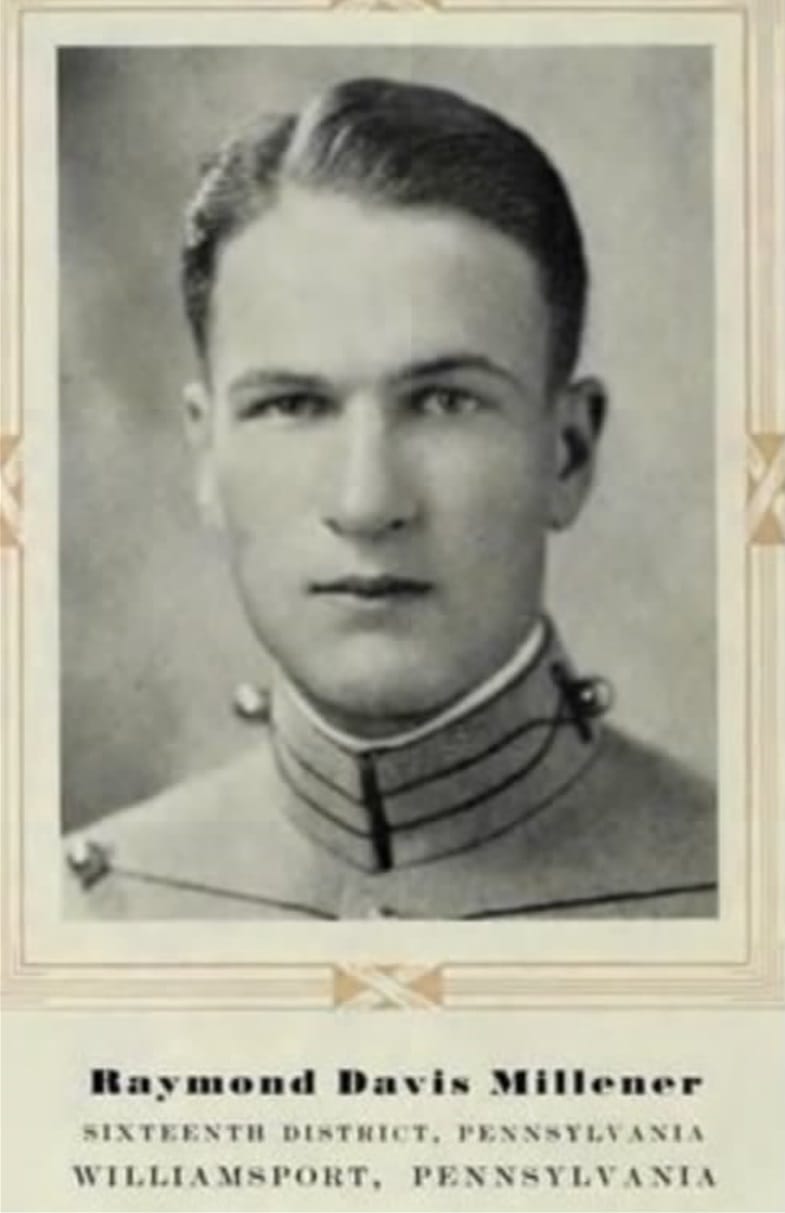
Colonel (COL) Raymond Davis Millener of Divisional Headquarters Company, 101st Airborne Division, was born in Williamsport, Lycoming County, Pennsylvania, to William Seward and Nellie Bacon (Davis) Millener on April 13, 1908.
He had two brothers, George Alvin and William Seward Millener III. George preceded his younger brother Raymond in attending the United States Military Academy (USMA) and graduated in 1924. Seward Millener also served in the U.S. Army with distinction during WWII.
Raymond graduated from Williamsport High School in 1926 and the USMA at West Point in 1930. Lieutenant (LT) Raymond Millener’s first assignment was at Fort Niagara, New York, with the 28th Infantry. In the summer of 1932, he was ordered to Panama where he served until 1935. Part of this tour was spent with the Infantry at Fort Davis and part as the Assistant Provost Marshal of the Atlantic Sector with station at Fort De Lesseps.
While Raymond was a cadet, he met Linda H. Mercer, a young woman of staunch Army tradition and the niece of General Campbell B. Hodges. They married in 1934 while he was stationed in Panama. The young couple returned to the United States in June of 1935, when LT Millener was ordered to go to the Army Infantry School at Fort Benning, from which he graduated in 1936. Shortly after his assignment at Fort Benning, he was promoted to Captain on August 1, 1935.
Millener was then sent to France for language study prior to a tour as an instructor at West Point. He pursued his studies at the Sorbonne in Paris from 1936 - 1937. Afterwards, he reported to the Military Academy to assume his duties as an instructor in the Department of Modern Languages. Raymond was then promoted twice in the same year; to Major on January 31, 1941, and then Lieutenant Colonel on December 24, 1941.
Earlier that year, his daughter Virginia Hodges Millener, was born at West Point on April 13, 1941.
In June 1941, Colonel Millener was reassigned to the 2nd Infantry Division at Fort Sam Houston, Texas. He commanded the 2nd Battalion, 9th Infantry Regiment, and then attended Command and General Staff School in February 1942. After graduating, he was assigned to the 356th Infantry Regiment at Camp Carson, Colorado. In Dec 1942, LTC Millener was assigned to Headquarters Company, 101st Airborne Division at Fort Bragg, North Carolina, where he served as the Assistant Chief of Staff.
LTC Millener deployed to England with the HQ Company in August 1943 and would be heavily involved in the division’s planning for the Normandy invasion.
Originally he was scheduled to land in Normandy by glider, but that was changed at the last minute, and he was now to land there by sea. But Raymond appealed this decision and requested that he be allowed to parachute in, even though he had not had completed parachute training. His request was approved, and on June 5, 1944, he departed with a stick of other paratroopers from Welford Airfield on a C-47A aircraft of the 435th Troop Carrier Group.
The stick of LTC Millener was dropped about eight miles to the west of their intended Drop Zone C on D-Day morning, which meant they were not far away from the opposite side of the Normandy peninsula. It was Major Danahy of the divisional G2 branch who had discovered their location.
Millener soon rounded up other displaced troops from HQ Company, 101st Airborne, and the Division Signal Company, including radioman PVT Robert Hayes, PFC Johnny Hickman, and SGT William H. Shank Jr. The group would later join forces with other misdropped paratroopers of the Regimental Headquarters Company of the 501st.
For the next five days this makeshift group, commanded by Danahy and Millener, created some havoc while working their way back to their intended location! They destroyed two German tanks east of Hautteville, two half-tracks, a Kübelwagen, a motorcycle, and an ammunition train. They also ambushed German troops retreating from a town named Picauville.
For leading this group and its actions, LTC Millener was awarded a Distinguished Service Cross. The citation reads as follows:
“The President of the United States of America, authorized by Act of Congress, July 9, 1918, takes pleasure in presenting the Distinguished Service Cross to Lieutenant Colonel (General Staff Corps) Raymond Davis Millener (ASN: 0-18140), United States Army, for extraordinary heroism in connection with military operations against an armed enemy while serving as Operations Officer, 101st Airborne Division, in action against enemy forces on 6 June 1944, in France.
Lieutenant Colonel Millener and his men were dropped 15 miles from the appointed drop zone. He assembled all the forces in the immediate vicinity and started toward the designated assembly area to join the main force. En route, the party encountered heavy enemy resistance. Despite the intense enemy fire, Lieutenant Colonel Millener repeatedly exposed himself in leading his men.
Inspired by Lieutenant Colonel Millener's personal bravery and leadership, his small force successfully assaulted two machine gun positions and destroyed two enemy tanks and two enemy half-track vehicles. The gallantry and superior leadership displayed by Lieutenant Colonel Millener exemplify the highest traditions of the military forces of the United States and reflect great credit upon himself, the 101st Airborne Division, and the United States Army.
General Orders: Headquarters, First U.S. Army, General Orders No. 31 (July 1, 1944)
Upon reaching the division area, he resumed his duties, working tirelessly until he suffered a collapsed lung in late June 1944 and was medically evacuated. Colonel Millener rejoined his unit in August 1944 as Chief of Staff of the division and jumped into the preparation for the next operation – Operation Market Garden in the Netherlands.
On September 17, 1944, Colonel Millener made his second combat jump into Son, Netherlands. This time it was from a plane that had been struck by German anti-aircraft FLAK and was on fire.
The members of his stick of HQ paratroopers had to jump through the flames as the pilot sought to maintain level flight so the men could exit successfully. The pilot, MAJ Dan Elam, and his co-pilot, died when the plane exploded during an unsuccessful belly landing.
It was another hairy moment for Colonel Millener.
Being engaged in combat is a mentally very stressful experience for all men and women involved in it, not only on the frontline, but also for the ones who support those who are actually fighting the enemy. A situation like that may sometimes lead to a tragic decision, which was the case with Raymond Millener.
After the division was relieved from its tasks in the Netherlands at the end of November 1944, they were sent to Mourmelon, France, to begin planning for the next operation. COL Millener was directly involved in the rebuilding and re-equipping of the units. And because he was also affluent French, he was often called upon to conduct liaison with the French.
The long strain of over a year of continuous hard work, little sleep, heavy pressure, and combat finally took its toll. In the early morning hours of December 7, 1944, Colonel Raymond Millener died from a self-inflicted gunshot wound.
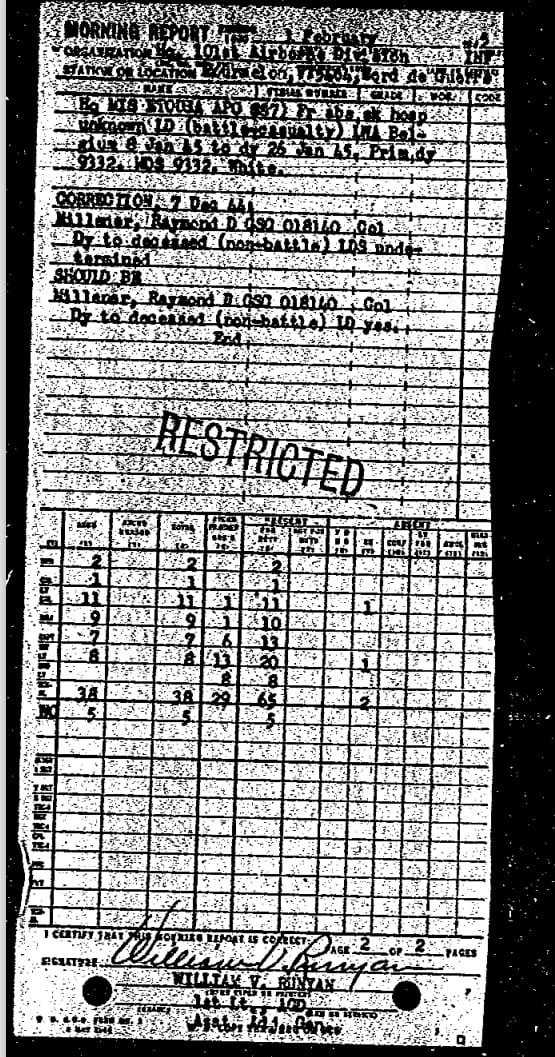
Another Screaming Eagle had soared to the ultimate height. 🦅
Unfortunately he wasn't the only one who struggled with his combat experience, as can be seen in the diary entry of George Koskimaki on December 11, 1944:
“I don’t know what has come over some people. A master sergeant (David Harmon) in the next barracks shot himself last night. It was the third suicide in four days.”
George had also described in his diary what had happened on that fateful morning of December 7:
“A very depressing event happened at Mourmelon. […] Colonel Ray Millener, Chief of Staff, stood in front of his bathroom mirror, put his service .45 to his mouth and fired. On his bedside table was a copy of War and Peace. Perky (my driver) and I took his body to the General Hospital in Rheims where an autopsy was performed. We then spent the rest of the rainy day finding a military cemetery that was open.”
COL Raymond D. Millener was first buried at Block B, Row 8, Grave 182 of the Temporary American Military Cemetery Champigneul, France. He would later be reburied at Plot A, Row 14, Grave 41 of the Epinal American Cemetery, Epinal, France. May he rest in peace.
Lest we forget! 🇺🇸
Sources
- Find a Grave, Raymond Davis Millener
- The Times (Shreveport, Louisiana), Sunday, December 28, 2008.
- D-Day with the Screaming Eagles by George Koskimaki
- 101st Airborne: The Screaming Eagles at Normandy by Mark Bando
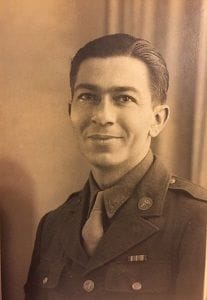
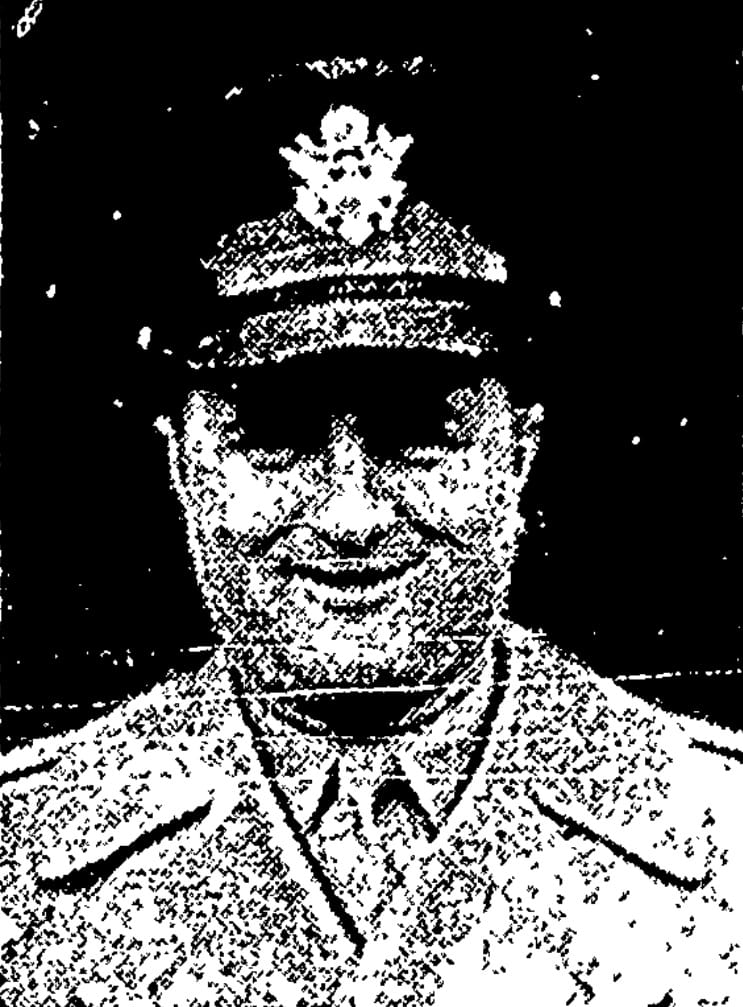
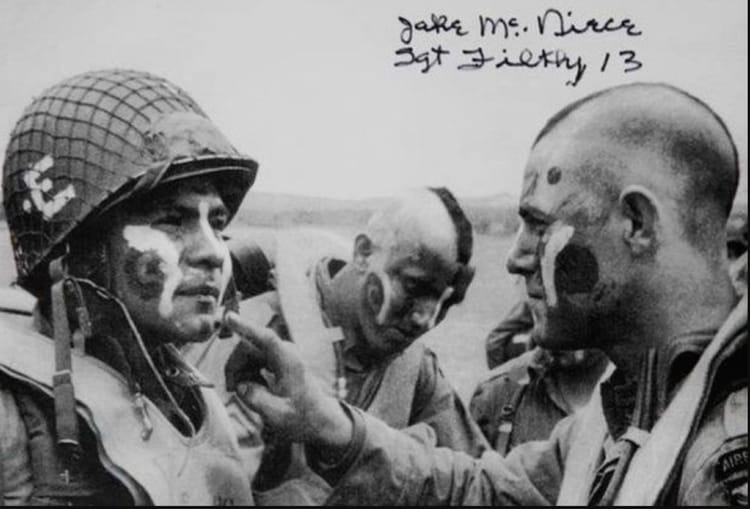
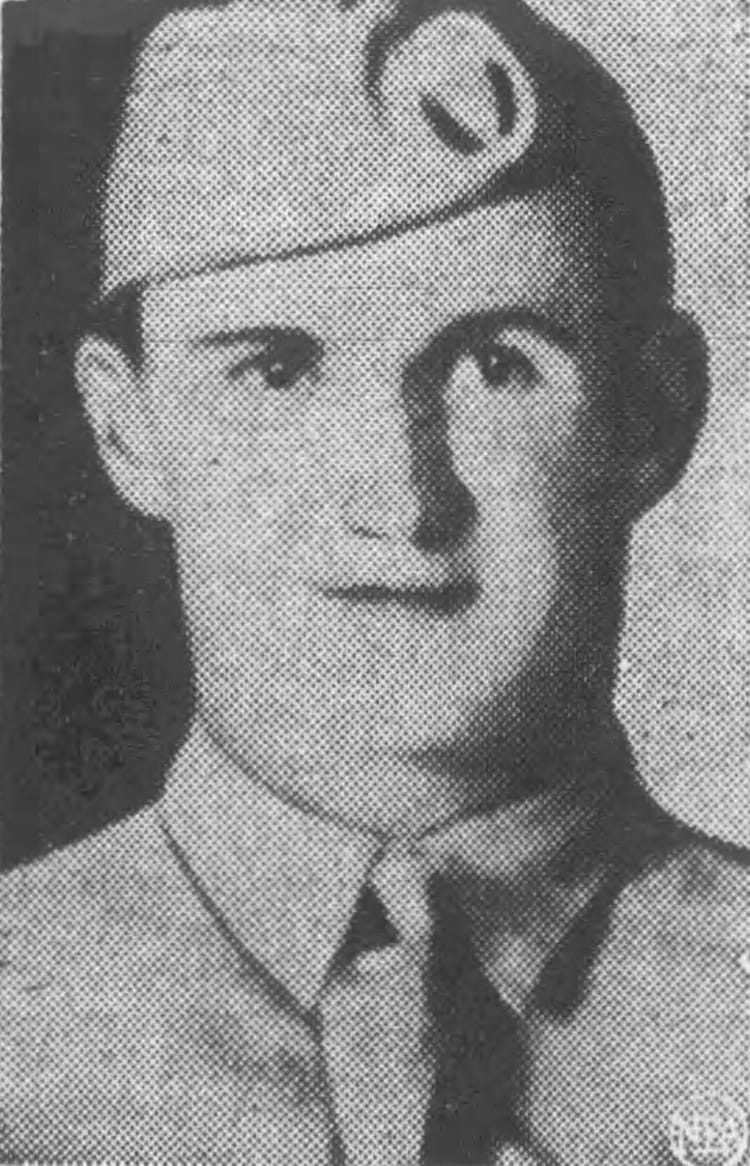
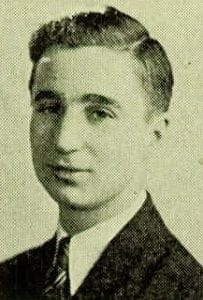
Member discussion